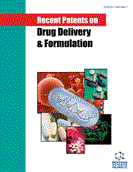Abstract
This chapter evaluates liposomes used as delivery carriers for herbal
products, which, due to poor permeability and solubility of extract components, has
become a major issue in phytotherapy for treating illnesses and human health problems.
Liposomes are vesicular formations with phospholipid bilayers that possess the
capability to entrap both water-soluble and hydrophobic substances. However, there are
several factors that should be considered with regard to herbal drugs, especially that the
preparation technique should be appropriate to the solvent solubility of the plant extracts.
In this regard, the ratio of phospholipids to extracts, pH stability, other liposomal
components, and the ligand required to render liposome stability, circulation in the
bloodstream for protracted periods, and targeted at specific organs should be
investigated. The enhancement of phytochemical constituent stability within a context
of environmental, physical, and chemical degradation, together with sustained or
controlled drug release, can be achieved by incorporating extracts into liposomes.
Moreover, the improved oral absorption of plant extracts by encapsulating them into
liposomes indicates increased permeability and bioavailability via gastrointestinal tracts,
thus enhancing pharmacological effects at low dose concentration as well as
decreasing toxicity. However, thousands of constituents contained in plant extracts
demonstrate various physicochemical characteristics that constitute significant
challenges for liposomal delivery. Consequently, a comprehensive analysis of
formulating and manufacturing aspects is required.
Keywords: Bioavailability, Human health, Illness, Liposomes, Phospholipids, Plant extracts, Solubility.






















